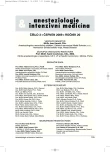Polarography – major contribution of Jaroslav Heyrovský to the intensive therapy
Authors:
Pokorný Jiří; Dvořáček Bořivoj; Slánská Marie
Authors‘ workplace:
Komise pro historii oboru ČSARIM
Published in:
Anest. intenziv. Med., 20, 2009, č. 3, s. 165-167
Category:
History
Overview
Polarography is an electrochemical method enabling the analysis and quantitative measurement of very small quantities of a number of substances, among others the oxygen. This method has been elaborated by Czech physical chemist Jaroslav Heyrovský. He introduced the dropping mercury electrode for measuring current and after having connected a sensitive galvanometer he began to measure and record continuously even minute quantities of oxygen in fluids, among other media in blood. He called the method polarography and developed it for practical use in laboratories and upheld it worldwide. For this invention Heyrovsky was awarded the Nobel Prize for chemistry in 1959.
Keywords:
polarography – dropping mercury electrode – intensive care medicine
Sources
1. Heyrovsky, J. Electrolysis with the dropping mercury electrode. Chemické listy, 1922, 16, s. 256.
2. Heyrovsky, J., Shikata, M. Researches with the dropping mercury cathode. Part II. The polarograph. Recl. Trav. Chim. Pays Bas., 1925, 44, s. 496.
3. Brdička, R. To the sixtieth birthday of professor J. Heyrovský – An account of his scientific acheivements to 1950. Collection of Czechoslovak Chemical Communications XV, 1950, s. 689–692.
4. Astrup, P., Severinghaus, J. W. The History of Blood Gases, Acids and Bases. Copenhagen: Munksgaard 1986.
Labels
Anaesthesiology, Resuscitation and Inten Intensive Care MedicineArticle was published in
Anaesthesiology and Intensive Care Medicine

2009 Issue 3
Most read in this issue
- Analgosedation in Intensive Care Units (ICU) in the Czech Republic – the results of questionnaire study
- Delirium during the postoperative period and in the intensive medicine
- Catheter-related blood stream infections
- Dynamic parameters of preload in pressure support ventilation
